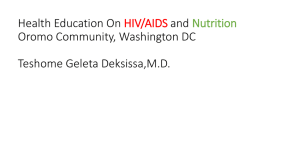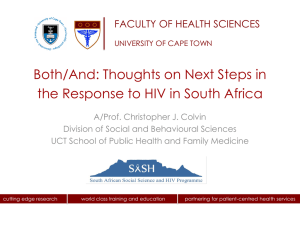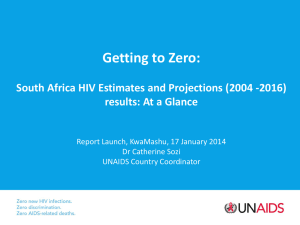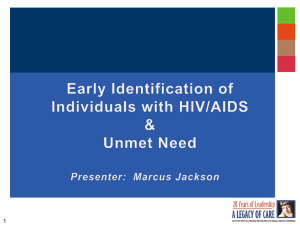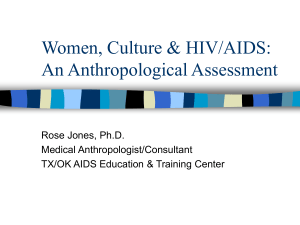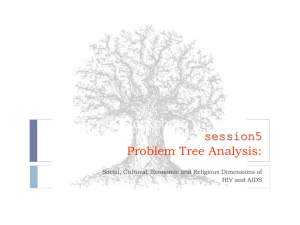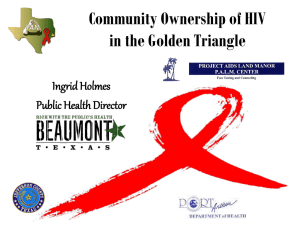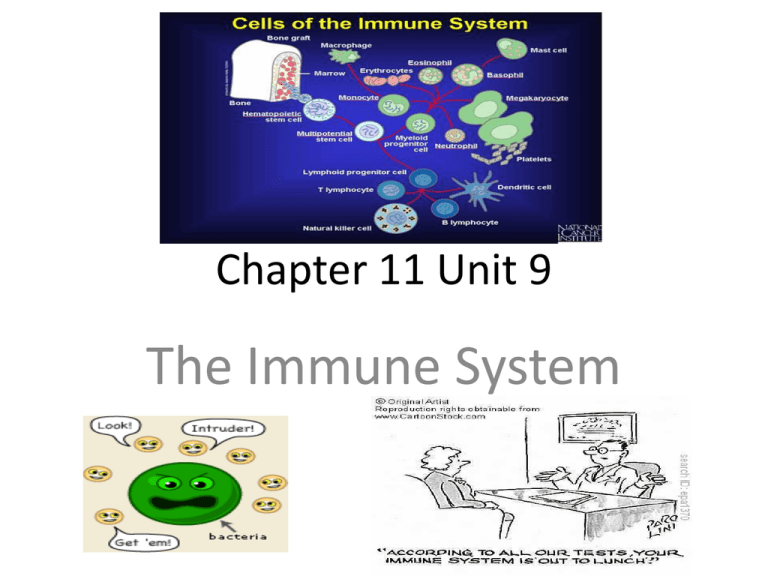
Chapter 11 Unit 9
The Immune System
The Immune System
• The function of immunity is primarily provided
by specific cells and organs of the circulatory
system(blood cells and tissues)
• The role of immunity is essential to the health
and well-being of humans
• When the system misfires or is crippled, a
whole host of diseases can develop, such as
AIDS, allergies, arthritis, and cancer
The Immune System
• We live in an environment full of antigens(non-self or
foreign)
• Examples of some antigens:
• Bacteria, viruses, fungi, foreign materials, and parasites
• In abnormal situations, the immune system can
mistake self for non-self and attack, this is known as an
autoimmune disease(RA or lupus)
• Sometimes, the system responds inappropriately to
harmless substances, such as pollen or cat hair, this is
known as an allergen
• When one’s own cells become malignant, their
structure changes, making them “different” and a
response occurs
• Many antigens can cause serious reactions, infections,
diseases, and even death
The Immune System
• The body has three main lines of defense against
antigens:
• 1. Barriers: skin, mucous membranes in our lungs
and gastrointestinal tract
• 2. Inflammation process: begins within seconds
of an invasion, with redness, and swelling in that
area
• 3. Antibodies: involves the actions of specific
cells and other immune system components to
attack the antigen
Origin Of Cells
• Leukocytes(white blood cells) play a vital role in defending the body
• All blood cells originate in the bone marrow and initially develop
from stem cells
• There are 5 WBC:
• Eosinophils: 3% of leukocytes, fight against allergic reactions, they
are weak phagocytes(this is engulfing or digesting antigens)
• Neutrophils: 64% of leukocytes, these are the first to arrive at an
infection
• Basophils: 1% of leukocytes, small an produce the inflammation
process
• Lymphocytes: large leukocytes 25%, these contain B and T cells(talk
about later)
• Monocytes: 8% of leukocytes, largest wbc called “big eaters” that
eat bacteria, monocytes are immature until they enter the tissue to
fight infection and then they are almost large enough to see with
the naked eye, in this stage they are called macrophages
Five White Blood Cells
Organs Of The Immune System
• The organs of the immune system
are located throughout the body
• They include:
• Bone marrow:
• Thymus: lives in your chest,
between your breast bone and
your heart
• Lymph nodes:
• Spleen:
• Tonsils:
• Adenoids:
• Appendix:
• Peyer’s patches:(are lymph
nodes, located in the intestine)
The Immune System
• Now that you know how lymph nodes functions,
it is easy to understand why they become swollen
and tender during periods of infection
• It is because of the increased amount of cellular
activity within the nodes
• This also occurs when malignant cells break away
and circulate into the lymph fluid and are trapped
into nodes, this is known as metastasis
• The assessment of tumors is called staging and is
determined by the size of the tumor , the number
of lymph nodes, and the metastatic progress
B Lymphocytes(one of our 5 WBC)
• B Lymphocytes represent about 20 % of the
total lymphocytes and act upon their targets
by producing antibodies in a process called
humoral immunity(body fluids)
• Each B Lymphocyte is capable of making only
one type of antibody, and only one specific
antigen can activate it
Lymphocytes T Cells
•
•
•
•
•
•
•
Lymphocytes are a small WBC that
contain both T cells and B cells
T cells: directly attack invading
organisms
They are present in four identifiable
types:
1. Helper T cells: make antibodies
2. Suppressor T cells: stop T cells
when the ‘battle” is under control
3. Killer T cells: can directly kill
infected cells, unfortunately, they can
attack transplanted tissue or organs
4. Memory T cells: have a memory
from a previous experience with
specific antigens and are prepared to
act upon re-contact
Primary Humoral(B-cell or AntibodyMediated)1st Response
• In this response, an antigen enters the body and
meets with one of the matching antibody sites
• The B cell then connects and processes the
antigen to attract the helper T cells
• Helper T cells bind with WBC(macrophages) and
begin the healing process(mitosis)
• The immunoglobulin also come together in the
1st response
• A full primary immune response requires 5 to 6
days to develop
Antibodies
• The antibodies from the B cells are protein substances
belonging to a family of large molecules known as
immunoglobulin(page 480)
• There are five classifications of immunoglobulin’s
• 1. IgA(presence of body fluids)
• 2. IgD(regulate B cell activity)
• 3. IgE(fights against parasites, hives)
• 4. IgG(carries out antibacterial and antiviral activity)
• 5. IgM(found in the bloodstream and kills bacteria)
• Their presence in the body can be measured by a blood
test
Natural Killer Cells
• These are non T and non B cells,
they are in the bloodstream
system
• Natural killer cells kills some
cancer cell and cells infected with
viruses
• They produce holes in the target
cell, leading to it’s destruction
• Clinical studies have shown that it
is well tolerated and some antitumor responses have been seen
in patients with lung cancer,
melanoma and lymphoma
• As the majority of pregnancies
involve two parents who are not
tissue matched,
successful pregnancy requires the
mother's immune system to
be suppressed. NK cells are
thought to be an important cell
type in this process.[
2nd Response
• In a secondary response, the reaction is much
faster, taking only 2 to 3 days
• This is possible because left-over lymphocytes
with memory are able to attack the antigen
• Once one of the cells meets the same antigen,
mitosis is immediate, and large numbers of
appropriately matched calls and antibodies
are produced to destroy the antigen
Primary Cell-Mediated Response(T-cell
Activity)
• This response of T cells is both quick and
direct
• Some T cells are vital to the operation of other
cells
• The helper T cells assist B cells to produce
antibodies
• Helper T cells identify antigens trapped by
WBC(macrophages)
Immunizations
• With the knowledge of immune reactions, it is easy to
understand how immunizations and vaccinations
provide protection against antigens
• Vaccines are given in initial and in “booster” doses to
provide memory cells and antibodies for longer periods
• These methods provide active immunity against that
specific disease
• Tetanus is an example: antibodies from another source
are injected into the person to provide a temporary
immunity to counter the immediate attack of
pathogens, that why this is given after an injury or
animal bite
Diseases And Disorders
HIV/AIDS
• Acquired immunodeficiency syndrome(AIDS): is a
worldwide epidemic
• The tem AIDS refers to the most advanced stages of
HIV(human immunodeficiency virus)
• Globally, HIV is still increasing over time as the
epidemic spreads to different countries
• According to the CDC(2009) there are 50,000 people
newly diagnosed with HIV each year in the US
• The beginning of HIV was discovered in the 1980
• The estimated number of AIDS diagnoses through 2010
in the United States was 1,155,792.
Diseases And Disorders
HIV/AIDS
• AIDS is an infectious disease caused by HIV,
which renders the body’s immune system
ineffective
• The virus has been found in many body fluids
but survives well only in those with numerous
WBC’s, such as in blood, semen, and vaginal
secretions
• The virus invades the helper T cells and
macrophages, hiding in their membranes
Diseases And Disorders
HIV/AIDS
• After HIV enters the body, it piggybacks onto a T cell
and works its way inside of that cell
• Once inside, the virus completely takes over the T cell
and uses it as a virus-making factory to make a lot of
copies of itself
• The newly made viruses then leave the T cells and go
on to infect and destroy other healthy T cells as they
continue to multiply inside the body
• After the virus invades the T cells, they can no longer
properly fight infections.
• Someone who is infected with the virus is called HIV
positive, but it may take years for the virus to damage
enough T cells for that person to get sick and develop
AIDS
Diseases And Disorders
HIV/AIDS
• The virus can be transmitted by the following methods:
• Unprotected sex with an infected partner
• Sharing drug needles or syringes with an infected
person
• Women with HIV can transmit the virus to their babies
during pregnancy, birth, or breast feeding
• Blood transfusions(very low because of screening)
• Health care workers from needle sticks or body
fluids(very low, less than 0.01%)
Misconceptions Of HIV Transmission
• Causal contact with an infected person(towels, toilet,
bedding, swimming pools, sharing utensils)
• Kissing(open mouth very low risk)
• Mosquitoes
• Tattooing
• Body piercing
• HIV infection from infectious bodily fluids outside the
human body is essentially zero
• Outside of the body, the HIV virus dies within minutes
without the temperature necessary for its survival
• A Western Blot Test(non-waived) is used to confirm an HIV
diagnosis
•
•
•
•
•
•
•
•
•
•
•
•
Signs And Symptoms Of HIV(list on
page 488)
Early signs:
Many do not have symptoms when first infected
Within 1 to 2 month they may have flulike symptoms(fever, fatigue, headache,
enlarged lymph nodes)
When they have these symptoms, HIV is present and they are highly contagious
Later signs:
Severe symptoms may not occur for about 10 years(this is when helper t cells are
being destroyed)
Symptoms at this time may be:
Enlarge lymph nodes, fatigue, inflammatory
disease, fever, sweats, weight loss, rashes,
memory loss
Late signs:
HIV to AIDS
Pneumonia, cough, difficulty breathing,
fever, some cancers, meningitis, or chronic diarrhea
These are often resistant to treatment
HIV
• HIV is treated with antiretroviral (ARV) therapy(HIV
cocktails)
• Antiretroviral drugs are used in the treatment and
prevention of HIV infection. They work against HIV by
stopping or interfering with the reproduction of virus in the
body(20 approved meds)
• Antiretroviral drugs interfere with the way HIV makes
copies of itself and the way it spreads from cell to cell
• Taking at least 3 medicines at the same time makes it
harder for the virus to adapt and become resistant
• If a pregnant woman has HIV, she will need to start an ART
treatment. This is a very good way to make sure that her
baby will not get the HIV.
HIV Medications $
Agenerase
Aptivus
Combivir
Crixivan
Emtriva
Epivir 300mg
Epzicom
Fortovase
$772
$1117.50
$752.64
$570.96
$347.11
$347.11
$813.55
$263.35
Allergies
• Sometimes the immune system
can damage instead of protect
the body(from dust, animal hair,
food, pollen, insects)
• This is allergies and may damage
tissues
• Allergies may affect different
areas of the body:
• In the nose: rhinitis
• In the lungs: as asthma
• In the eyes: as conjunctivitis
• On the skin: as eczema,
dermatitis, or hives
• In the digestive tract: vomiting or
diarrhea
• When exposed to an allergen, the
antibody
IgE(WBC- B cells) is produced
resulting in a histamine responses
Cancer
• Cancer is a group of diseases characterized by
uncontrolled growth of abnormal cells
• These cells accumulate and form tumors that
may compress, invade, or destroy normal
tissue
• Cells have the potential to break away from a
tumor and travel to other areas of the body
• The spread of a tumor to a new site is called
metastasis
Cancer
• Cancer is the second leading cause of death
• One out of every four deaths in the US is from
cancer
• Oncologists are physicians that specializes in the
education and treatment of cancer
• The medical term neoplasm is defined as a new
growth
• There are benign and malignant tumors
• Benign tumors are slow growing and usually do
not cause any problems
Malignant Tumors
• Malignant tumors are cancerous and differ
from benign in several ways:
• Cancer cells alter cell structure
• Cancer cells lack normal growth
• Cancer cells grow rapidly and invade other
tissues
• Cancer cells escape the immune response
• Cancer cells cause destruction of normal
tissue
Classifications Of Cancer
• Cancer can be classified according to its cellular origin
• Cancers arising from epithelial tissues are known as carcinomas(breast
cancer), and those from connective tissues are call sarcomas(bone or
blood cancer, rare in adults)
• Cancers can also be described according to their degree of grade
• The grading system goes from grade 1(resembles a normal cell) to grade
4(grow rapid and look abnormal)
• Size is measured in cm
Cancer Staging
• Staging is a term used to identify the extent of spread
• This is a system used worldwide
• This is used to plan treatments, evaluations, outcomes, and
prognosis
• The method is known as the TNM system and uses a standard
criteria:
• T: the size of the tumor
• N: the presence or absence and the extent of the lymph nodes
• M: The presence or absence of distant metastasis
• Number are added to the three components:
• Example: T- Tumor size: T1
N- nodal involvement: N2
M- metastasis: M1
Stages Of Cancer
The Seven Warning Signals Of Cancer
•
•
•
•
•
•
•
Change in bowel and bladder habits
A sore that does not heal
Unusual bleeding or discharge
Thickening or lump in the breast or elsewhere
Difficulty swallowing
Obvious change In a wart or mole
Nagging cough or hoarseness
Diagnosis Tests For Cancer
• The diagnosis of cancers cells can only be considered
100% accurate if a sample of cells are removes and
examined under a microscope
• A biopsy is a removal of a sample of tissue from the
body for microscopic examination to determine a
diagnosis
• Some laboratory tests can help establish the diagnosis
of cancer
• Tumor imaging: a variety of radiology and imaging tests
are used to aid in the diagnosis and staging of cancer,
x-rays, CT scans, MRI’s, endoscopy, ultrasound,
mammogram
Treatment For Cancer
• The major treatment
methods for cancer are
surgery, radiation, and
chemotherapy
• Radiation is the use of highenergy particles or damage
to DNA of cancer cells
• Chemotherapy involves the
use of potent medications
to treat cancer cells by
altering cell division
• It can be administered
orally, intravenous, SQ, IM
• Page 498(list of treatments)
Chronic Fatigue Syndrome
• Chronic fatigue syndrome refers to severe,
continued tiredness that is not relieved by rest
and is not directly caused by other medical
conditions
• They believe that the virus or bacteria enters the
body but does not set off a normal immune
response
• The cause is unknown
• One treatment is exercise therapy of 1 hour
sessions
• This may be cause by the presence of high levels
of antibodies of the epstein-barr virus(mono)
Lupus
• This is a chronic disease of unknown cause in which
striking changes occur in the immune system
• It causes inflammation of various parts of the body
• It can be life threatening if this occurs in the kidneys,
lungs, heart, or brain
• In lupus, the usually protective antibodies are
produced in extremely large quantities and react
against the person’s own tissues, this is referred to as
an autoimmune disease
• There is no cure for this disease, pain is controlled by
ibu or Tylenol, rest and normal exercise
Rheumatoid Arthritis
• Rheumatoid arthritis (RA) is a long-term disease that leads to
inflammation of the joints and surrounding tissues. It can also affect
other organs
• The cause of RA is unknown
• It is an autoimmune disease, which means the body's immune
system mistakenly attacks healthy tissue
• RA can occur at any age, but is more common in middle age,
women get RA more often than men
• Infection, genes, and hormone changes may be linked to the
disease
• RA usually requires lifelong treatment,
including medications, physical therapy,
exercise, education, and possibly surgery.
• Early, aggressive treatment for RA can delay
joint destruction

